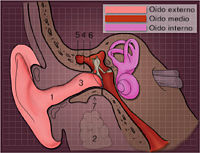Serous otitis


Transtympanic drainage
Ear drainage
Recurrent acute otitis media
Recurrent acute otitis media is one of the most common childhood health issues and one of the main causes of hearing loss in children. Around 75% of children have had at least one episode of otitis media.
What are the symptoms?
Recurrent acute otitis media causes earache (otalgia), irritability and, on occasions, fever. It can sometimes be accompanied by otorrhoea (discharge from the ear).
In some cases, the only symptom will be hearing loss.
What causes it?
The main cause is enlargement of the adenoids, which causes the Eustachian tube to become blocked. This tube is the passage that connects the ear to the nose and it is where a healthy ear will eliminate fluid and therefore prevent its build-up.
How is it treated?
If treatment with antibiotics does not work and the infections persist, a grommet or ventilation tube will need to be fitted. Our team will insert this special kind of drainage tube, made from gold and titanium, to prevent water entering the middle ear; there is no need for ear plugs and the child can swim and bathe as normal. In children, the grommet is fitted under general anaesthetic and in adults, under local anaesthetic. After making a tiny incision in the eardrum (myringotomy), the mucous accumulated in the ear is suctioned out and the grommet is inserted, which will keep the middle ear aerated and allow liquid to flow out.
The grommet will perform the function of the Eustachian tube until it can return to normal and, as a result, hearing is fully restored. Moreover, if there is an infection, it too will drastically lessen or even disappear completely after the fitting of a grommet. If the serous otitis media is accompanied by enlarged adenoids, they will also be removed.
What does recovery involve?
Your child will not be able to feel the tube fitted in his/her eardrum and should be able to return to normal activities. If the tube is made from gold and titanium, it can be immersed in water (even swimming pools) without the need for ear plugs. The tube will remain in the ear for several months and will fall out by itself when the body has fully rid itself of the illness.
 by Develona
by Develona